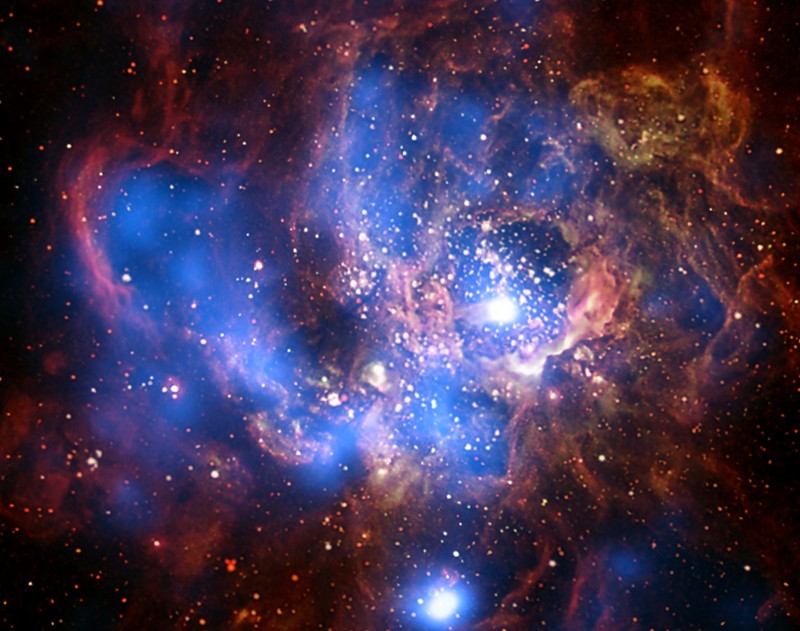Credit & Copyright: X-ray: NASA /
CXC /
R. Tuellmann
(Harvard-Smithsonian CfA)
et al.;
Optical: NASA/AURA/STScI
Explanation:
Some 3 million light-years distant in nearby spiral
galaxy M33,
giant stellar nursery
NGC 604 is
about 1,300 light-years across,
or nearly 100 times the size of the
Orion Nebula.
In fact, among the star forming regions within the Local Group of
galaxies, NGC 604 is second in size only to 30 Doradus,
also known as
the Tarantula Nebula in the
Large Magellanic Cloud.
This space-age
color composite of X-ray data (in blue hues)
from the Chandra Observatory, and
Hubble optical data
shows that NGC 604's cavernous bubbles and cavities are filled with a
hot, tenuous,
X-ray
emitting gas.
Intriguingly, NGC 604 itself is divided by
a wall of relatively cool gas.
On the western (right) side of the nebula,
measurements
indicate that material is likely
heated to X-ray temperatures by the energetic winds
from a cluster of about 200 young, massive stars.
On the eastern side the X-ray filled cavities seem to be older,
suggesting
supernova explosions from the end of
massive star evolution contribute to their formation.
Optical: NASA/AURA/STScI
1999 2000 2001 2002 2003 2004 2005 2006 2007 2008 2009 2010 2011 2012 2013 2014 2015 2016 2017 2018 2019 2020 2021 2022 2023 2024 2025 |
Yanvar' Fevral' Mart Aprel' Mai Iyun' Iyul' Avgust Sentyabr' Oktyabr' Noyabr' Dekabr' |
NASA Web Site Statements, Warnings, and Disclaimers
NASA Official: Jay Norris. Specific rights apply.
A service of: LHEA at NASA / GSFC
& Michigan Tech. U.
|
Publikacii s klyuchevymi slovami:
NGC 604 - star formation - zvezdoobrazovanie
Publikacii so slovami: NGC 604 - star formation - zvezdoobrazovanie | |
Sm. takzhe:
Vse publikacii na tu zhe temu >> | |
